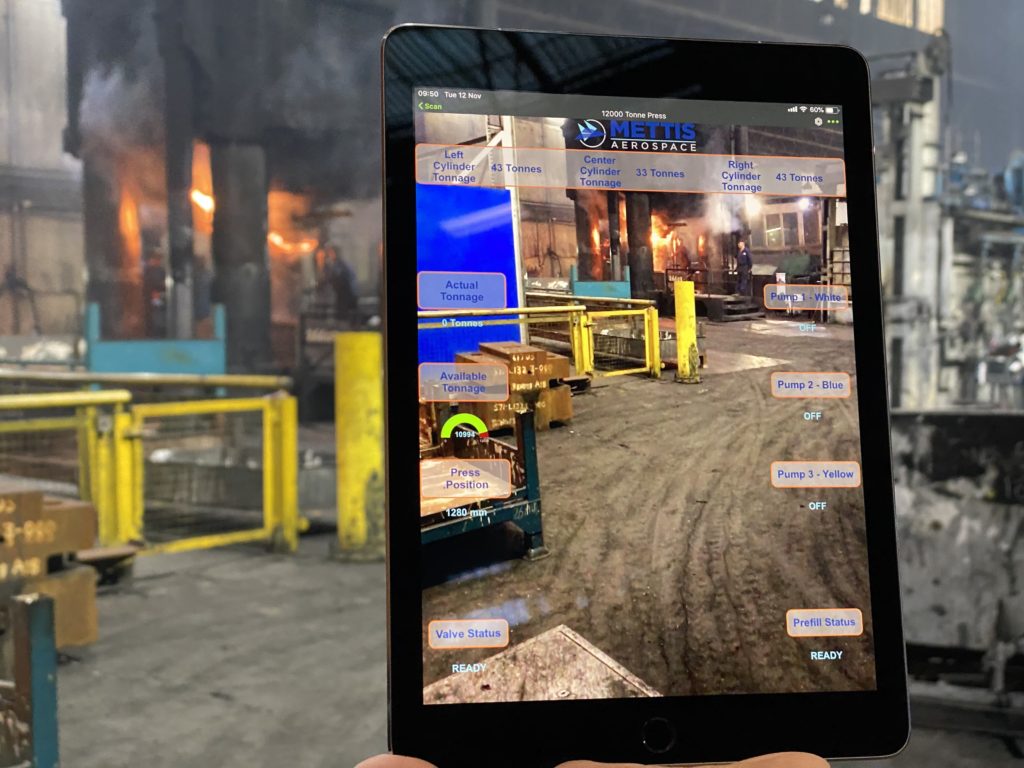Metal and heat. Since ancient times, these two foundational elements have continuously been used to create a variety of tools. In medieval times, metallurgy technology spawned swords and armor unlike any before it and, in the early 19th century, it vitalized the Industrial Revolution. Nowadays, high-tech metallurgical processes are giving rise to advanced materials and products.
In today’s industrial plants, manufacturers are streamlining processes to create better products, free of defects, that meet exact tolerances. Mettis Aerospace has been at the forefront of metallurgical innovation for over 80 years, specializing in forging, machining and sub assembly for the aerospace and defense sectors. The company uses powerful presses to forge a variety of metals into highly sophisticated products for the aerospace industry. As a technology driven company, Mettis also relies on network connected sensors, cameras, and robotics to manufacture their products. This is where Cisco, its technology, and partnerships comes in to play.

Electromagnetism and Wi-Fi
While metal and heat are needed for the forging of aerospace products, they are also detrimental to Wi-Fi. As a conductor of electricity and magnetism, metal directly affects radio waves, including those from Wi-Fi. This means that in a building made mostly of steel, where people are working with various metals on massive steel and iron presses, such as Mettis’ forging facilities, radio waves are reflected and diffracted in all directions. More metal means more degradation and interference, resulting in an unacceptable Wi-Fi experience. Add in high-heat (1000+ degrees Fahrenheit) and its effect on the electrical equipment and you have the worst possible situation for Wi-Fi.
Interesting fact: Mettis is home to some of the most powerful forging presses in the UK, one in particular weighs the equivalent of over 200 small cars.
Wi-Fi 6 drives industrial applications with ease
With that in mind, Cisco, along with its partners from the Wireless Broadband Alliance, set out to test Wi-Fi 6 at the Mettis manufacturing plant in Midlands, England. For the above reasons, previous attempts to use Wi-Fi failed in this environment. However, with Wi-Fi 6 come new technologies that enable it to perform in less than optimal conditions.
Read the
WBA Press Release
- First and most important, Wi-Fi 6 offers a new radio channel structure, allowing narrower but longer data symbols. Additionally, flexible orthogonal frequency division multiplexing (OFDM) guard interval ensures that Wi-Fi signals do not interfere with one another and cause overlapping transmission issues. This longer symbol duration (Ts) and guard interval (Gi) is better able to resist harsh multi-path environments, such as those found in the Mettis plant.
- Second, OFDM access (OFDMA) multiplexes multiple users on the same channel at the same time increasing network efficiency and providing lower latency for both uplink and downlink traffic. This is important for business critical, delay-sensitive applications used in manufacturing environments.
- Third, WiFi6 offers significant co-channel-interference (CCI) mitigation via Basic Service Set (BSS) color techniques that allow the operator to selectively ignore interference; boosting reliability and reducing delay. This is critical in open-space high-ceiling environments such as those found in the Mettis plant.
Mettis tested 4k live streaming video from cameras mounted on robotic arms, augmented reality to support equipment status and repairs, large file uploads, and Wi-Fi video calling on smartphones. Cisco Catalyst 9100 Wi-Fi 6 capable access points met all trial expectations with very low latency across a variety of partner devices throughout the manufacturing floor to prove out the success of the technology. Speeds reached 700Mbps which was our benchmark for this trial using the 80Mhz channel. Future trials will include the 160Mhz channel with a benchmark of gigabit speeds.
This was a huge success for all, especially Mettis. The pilot highlighted that industrial applications go beyond typical use cases and require the latest Wi-Fi 6 technology at both the network and device level to ensure consistent and reliable access and connectivity.



Haiiii sir,
In wireless mobility express access point 3802I , I Can installation mobility express image but again and again booting but not change in controller mode wt reason can you reply me.
Hi Ananth,
Please visit our Cisco Community for Wireless & Mobility, where Cisco and industry experts can give you the insight you need.
Rey MERAKI
Nice writings..
No comments
No comment